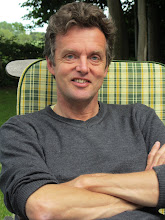RELATIVITY
This is going to surprise some people, but Albert Einstein was not really a very good mathematician. Sure, he was good with numbers. But he was not in the same league as (say) Euler, Gauss, Cauchy or Riemann. The Swiss-born Euler, who was headhunted to be director of the Russian Imperial Academy in the eighteenth century at the vast salary of 3,000 roubles, was so prolific that the official Russian scientific journal was still publishing the backlog of his 886 original mathematical works some forty five years after his death. Einstein's special theory of relativity, on the other hand, used equations called the Lorentz transformation that had already been worked out by someone else, namely the Dutch physicist Hendrik Lorentz.
Does that mean that Einstein wasn't a genius? On the contrary, he was. But not for the reason people commonly suppose.
At the end of the nineteenth century, Newtonian mechanics had reigned for 300 years. I stand on a hill and watch a train go past at 100 km/hour. A man on the train walks forward through the coaches at 5 km/hour. I say that relative to me, the man is travelling at 105 (100 + 5) km/hour. What is more, if I were an observer on the train itself, I would come up with the same answer.
Newtonian mechanics had since expanded to include the new field of electromagnetism, encompassed in the equations of James Clerk Maxwell in 1864. But then came the scientific bombshell of the Michelson-Morley experiment in 1887. Boiling this down to its essentials, this showed definitively that the speed of light was the same in all frames of reference. To use the train analogy, the speed of light for the man on the hill would not be the speed of light on the train plus an extra 5 km/hour, it would remain unchanged.
Mathematicians got to work, and Lorentz soon quantified the effect. But nobody could work out why there was an effect. Most people agreed that it was due to the ether, something in the air that affected light in some way. It took Einstein to show them that they were wrong.
His great insight - which in many ways is more philosophical than mathematical - was to say that the units were different. What is a meter to the man on the hill is not a meter to the man on the train; and what is a second to the man on the hill is not a second to the man on the train. In other words, there are no Newtonian absolutes, how we measure things depends on where we are. For speeds that are small relative to the speed of light, the differences are tiny, infinitessimal even (the Lorentz transformations use a factor equal to the square root of (1- v^2/c^2), so for ordinary measurements like the speed of the train, the factor is essentially 1). But as and when velocities start getting up towards the speed of light, the effects start to become large. And the speed of light, c, is constant in all frames of reference, because it is c train meters/train seconds, and that is the same as c hill meters/hill seconds.
It takes a genius to overturn, or at least expand, a scientific paradigm. Freed from thinking in purely Newtonian terms, it allowed scientists to move on from looking at what happens when things move really fast to looking at what happens when things get really small (which is what quantum theory is all about). Relativity and quantum theory have never been reconciled, though the hope of Einstein and many others was that they are both part of an even larger idea. He never managed to prove that, though he did enough in my view to justify his huge reputation.
Walter Blotscher
Tuesday, 27 November 2012
Subscribe to:
Post Comments (Atom)

No comments:
Post a Comment